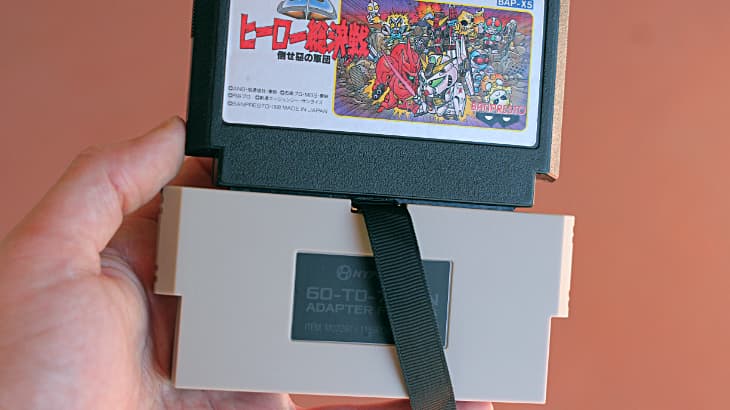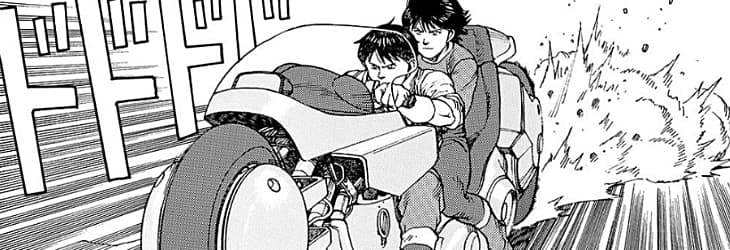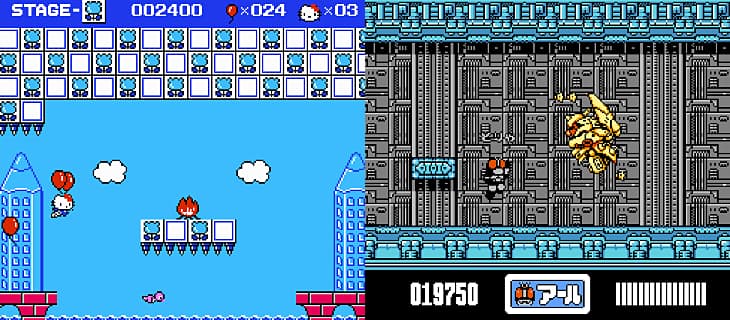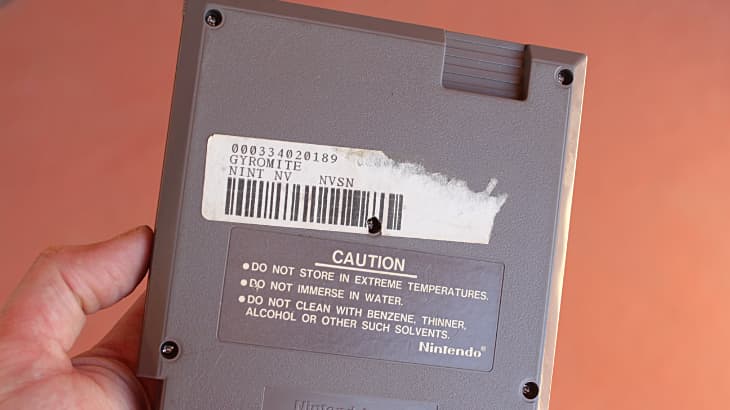
When I owned my original NES back in the 80s, the Famicom, or “Family Computer” market (the Japanese version of the NES) was not on my radar. But now that I can get my hands on these Japanese game cartridges, will they work in my NES?
Can I play a Famicom game in an NES console? Playing Japanese Famicom games in your NES requires an adapter to handle the differing connector pins, or you can use a hardware emulator that plays multiple game systems. This opens up a whole new world of 1,000+ Japanese games you may never have seen.
Table of Contents
The two systems use different numbers of connectors on their cartridges, so direct insertion just doesn’t work.
The NES uses a 72-pin connector to connect cartridges to the system.
The Japanese Famicom uses a 60-pin connector to connect cartridges to the system.
To play a Famicom cartridge on your NES console, you need a 60-to-72-pin adapter.

Japan & America - Two Markets, One Game System: Famicom & NES
Nintendo, the Japanese video game company behind such arcade hits as Donkey Kong, decided to get into the American home video game market shortly after the whole thing had gone down in flames. Thankfully, the market had not imploded in their native Japan, so they were able to find some success out of the gate with their initial foray - the “Family Computer” or Famicom. This was in 1983, the same year Atari and the overall American home video game market flamed out.
Then in 1985, pleased at their Japanese success, Nintendo wanted to get into the American market. The timing was terrible, because everyone was completely soured on home video games, due in large part to Atari’s poorly-managed game ecosystem, which allowed a glut of low-quality games to burn buyers, eventually tanking most people’s interest. Nintendo was undaunted though, and through persistence, plus some very clever salesmanship, they managed to find incredible success. Part of their approach was creating a system that was essentially the same in the core processing components, but stripped down from the fancier attempts the Famicom made at being like a computer.

Realizing that this was an entirely different market, Nintendo also reworked the whole look of the console, along with changing some functionality, such as the way the cartridges connect to the system. Part of the different cartridge connection was actually a very shrewd reaction to Atari’s colossal mis-step in allowing just anyone to make Atari games. Nintendo learned from Atari’s mistake, and created a technology - the 10NES lockout chip - that prevented unapproved game cartridges from working on the NES. While it ended up being less than 100% effective, it got rid of the riffraff. This protection system required some extra contacts on the cartridge connector.
The DIY Punk Rock Approach to Famicom Adapters
You might already have a Famicom adapter.
The original, and still perfectly usable approach to playing Japanese Famicom games on the American NES is to make use of the only Famicom-to-NES adapter that Nintendo ever created, but never marketed. If you have some NES games, you might already have one of these hiding inside one.
In Nintendo’s rush to meet the enormous demand the NES generated in America, they ended up selling Americans Famicom game boards in NES cartridge housings, with adapters inside that bridged the different pin configurations.

This works because the game chips (ROMs) and system processors (the chips in the console) are of the same type, and only the pins needed adapting. Very convenient.
In the past, gamers who realized that this was the case, would often buy games known to contain these adapters, and pull the adapters for use with Japanese cartridges. DIY at its best.

Important note: when you use the Famicom-to-NES adapter, you have to put your Famicom cartridge on backward, because of how the pins are set up.
This “hack” of scavenging adapters from NES carts works, but was never ideal (see why below). Years ago, dedicated solutions like the Honeybee adapter from Hudsonsoft came to market, and presented gamers with a more convenient solution by providing an adapter in a handy enclosure. Used ones are still available, and sought after. The problem though, is that many of these adapters were (and are) expensive enough that repurposing a Nintendo one out of an old $3 NES game still remained popular.
While there is always charm in a rough-and-ready DIY solution, the approach is less than ideal for a few reasons (even if it can get you some hacker cred with your friends). First, the in-cart adapter wasn’t designed to be a standalone item. This means both that you’re grabbing bare components, rather than a plastic housing which is designed to be handled, and that the two pieces come apart pretty easily. Both of these can be a complication when considering the third reason, which is that getting it in and out of a front-loader style NES can require either a little modification (here’s where you can earn extra points on your hacker cred), or else patience and finesse.

If you are just a hacker (or love saving a few bucks, and who doesn’t?) jump down the page to read more detail on scrounging one of these in-cartridge adapters. (I did it myself, just because I think it’s pretty cool)
The Easy and Affordable Famicom Adapter Solution
However, in the last couple of years, Hyperkin, creators of the RetroN 5 emulation console came out with their own updated version of the Famicom-to-NES adapter (check the price on Amazon), and it’s available for a nominal fee (under $15 at the time of this writing).

It has a convenient housing on it, and even sports a ribbon, which makes retrieving it from the depths of you NES front-loader very convenient. So, while I bought a Gyromite cartridge just to have the hacker adapter, I own the Hyperkin as well, and find it handier to use.
The RetroN 5: Multi-System Emulator Console
In my own journey, I’m having a lot of fun trying different things, and learning along the way. I’ve got some original consoles (Atari 2600, NES, Super Nintendo), and the above adapters work with my old school gear. However, I also picked up a funky hybrid console that’s a modern solution to playing old school cartridges. The Hyperkin RetroN 5 (check price at Amazon) uses console emulation, and has 5 different cartridge slots to let you play games from a bunch of classic systems.
[ Photo of my RetroN 5 ]
Among other slick features, the RetroN 5 plays cartridges for:
- NES
- Famicom
- Super Nintendo
- Super Famicom
- Sega Genesis
- Sega MegaDrive
- Game Boy
- Game Boy Color
- Game Boy Advance
- all without need for an adapter. It also lets you do saved games on games that don’t natively support it, by taking a snapshot of the current game “state,” as well as providing a way to use translation files to give you English translations on Japanese games.
Exotic Japanese Cool: The Game
In the 1980s, during the original heyday of the NES, America had a certain obsession with Japanese culture. Japan was a political ally, but an economic rival, and the culture was different enough, that it all felt pretty exotic. A whole subculture sprung up in the U.S. around interest in Japanese entertainment. This is the age of Buckaroo Banzai, the popularization of sushi in America, and a growing awareness of Japanese comics/animation. Simply put, Japanese = cool to a lot of people. Science fiction writer William Gibson built important parts of his career on it.





So now, a platform born in Japan during the 80s, provides you with the ability to explore a whole slew of Japanese games from that era.
What’s so interesting about exploring Japanese Famicom games is that they aren’t just the same games, only in another language (some are), but the ones that never made it here are lesser-known, and are crafted for a different culture. The artwork and gameplay, the obsession with “Kawaii” (the Japanese culture of “cuteness”)… you can find things that broaden your palate of gaming tastes.


There are 678 official games released in the U.S. For the NES. In contrast, there are almost 1,100 Famicom games. Whole undiscovered lands await exploration, chock full of strange, funny, and just plain different approaches to a familiar gaming system. Who wouldn’t want to check that out?
Also worth mentioning here, some games were re-released in English in the U.S., but you might want their Japanese versions, which can sometimes be cheaper if the U.S. versions have become too pricey.
And as a final note, some Famicom games had their names changed when they came to the American market. Check out this handy lookup table to see if that new Japanese game you just heard about might have a U.S. Version.
NES Games That You Can Scrounge Famicom Adapters From (cont’d from above)
You can recognize an NES cartridge that might have a Famicom adapter by the following characteristics:
- Original cartridge style, with no tab interlock on the spine
- Five screw (instead of four) case assembly
- Flathead screws, not “gamebit” screws



And it’s one of the cartridges on this list:
- 10-Yard Fight
- 1942
- Baseball
- Clu Clu Land
- Donkey Kong Jr.
- Duck Hunt
- Elevator Action
- Excitebike
- Golf
- Gumshoe
- Gyromite
- Hogan’s Alley
- Ice Climber
- Kung Fu
- Mike Tyson’s Punch-Out!!
- Pinball
- Raid on Bungeling Bay
- Rygar
- Soccer
- Stack-Up
- Tennis
- Urban Champion
- Wild Gunman
- Wrecking Crew